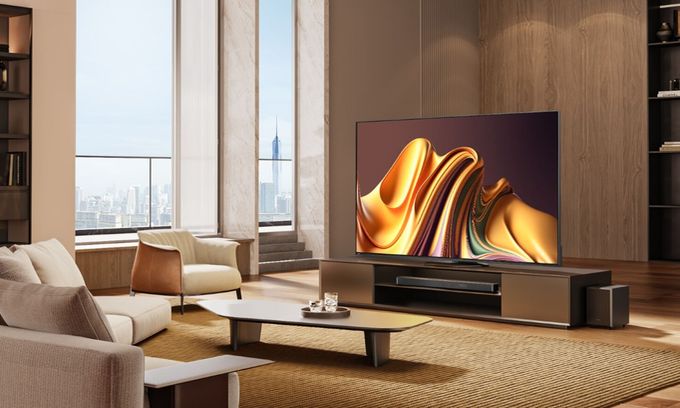The sales volume of TVs in 2023 reached almost 200 million. At the same time, two South Korean and two Chinese giants provided ~75%, including:
~ 30% – Samsung Electronics;
– almost 20% – LG Electronics;
~ 12.5% – TCL;
~ 12% – Hisense.
In addition, this list contains models from the Chinese Haier (more than 10%), Xiaomi and Sony (~5% each), Philips and Vizio (~3% each), etc.
Samsung/LG vs TCL/Hisense
South Korean Samsung and LG premium models are more expensive, but they offer superb picture / sound quality due to the innovations, including quantum dot (QD) technology, miniLED backlight, LG OLED Evo panel, HDR technology, etc. In addition, their quality has been confirmed by an impeccable reputation for several decades.
Chinese TVs later entered the premium segment. For example, the TCL 6 series with the popular Roku browser first introduced the ultra-innovative miniLED backlight in 2018. It used 96 independent local dimming zones in the 55″ model and about 150 zones for the 65″ matrix. In fact, the developers have replaced traditional LEDs with miniature LEDs.
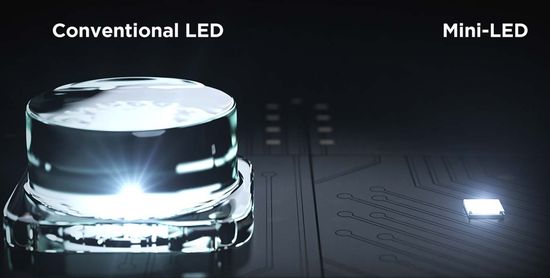
The radical reduction in size allowed the developers to increase their number to tens of thousands. Grouped into individually controlled arrays (local dimming zones), they provide brightness control in individual areas depending on the content. As a result, this technology radically increased the overall image contrast. Today it’s used in premium models from almost all industry leaders under different names, including TCL OD Zero and Hisense miniLED Pro in premium ULED TVs, Samsung Neo and LG QNED series.
Over the course of several years, Chinese companies have significantly increased technological level, almost catching up with their South Korean competitors. But the price of their flagship models remained significantly lower (65″, LED, QD+miniLED):
– Hisense 65U8K (2023) – $ 800;
– TCL 65QM850G (2023) – up to $ 1,000;
– Samsung Neo 65QN95C / 65QN90C (2023) ~ $ 2,000 / $ 1,500;
– LG 65QNED90TUA (2024) ~ $ 1,700.
Of course, improving the ratio of their price and quality causes an adequate reaction from the consumer market, ensuring a rapid increase in the popularity of these brands.
TCL vs Hisense
Prices of entry level models vary within the same range and are:
– TCL – from $180 for a 32-inch Full HD 3-Series to $ 1,300 for an 85-inch 4K 4-Series;
– Hisense – from $ 160 for a basic 32-inch HD H55 up to $ 680 for a 75″ 4K model.
Both companies actively use innovative miniLED backlight and QLED panels with quantum dot (QD) technology in premium models.
QD technology was developed more than 10 years ago and became the first epochal improvement in LED TVs. As known, they use white to illuminate the RGB filter when forming subpixels. As a consequence, color gamut and color accuracy significantly depend on its quality. Unfortunately, only the sun produces perfect white.
The developers solved this problem by generating white in TV. In fact, QD technology works like an analogue of a small sun. It uses an array of blue LEDs and additional film with sprayed microparticles (‘quantum dots’), the size of which matches the wavelengths of red and green. Light flow from the blue LEDs is directed onto a film containing microparticles. By absorbing it, the microparticles re-emit green and red. Behind the film they combine with blue, which partially passes through the ‘quantum’ layer. These primary colors generate near-perfect white, which is sent to the color LCD filter for the final formation of pixel colors.
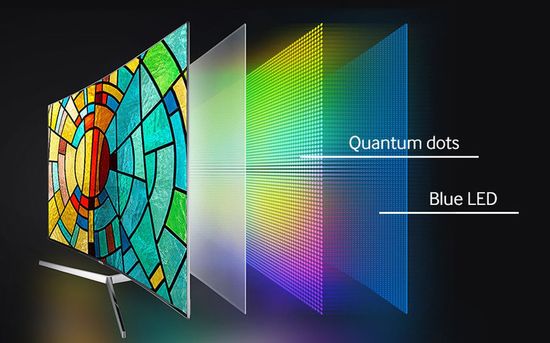
Despite identical technologies, image quality is slightly different:
– TCL offers superior color production, peak brightness, and very wide viewing angles;
– Hisense provides superb motion handling and great contrast ratios due to high performance of local dimming with proprietary Quantum ULED technology. As a result, Hisense TVs offer deeper blacks, uniform brightness, and smoother motion.
Hisense U8N
After lowering the starting price, the 65-inches model now costs only ~ $ 1,000.
The flagship Hisense U8N uses up to 2,000 local zones (doubled vs last year’s U8K) and provides peak brightness of up to 3,000 cd/m².
Unlike 2023’s Hisense U8K, the new U8N uses a central stand instead of two feet.
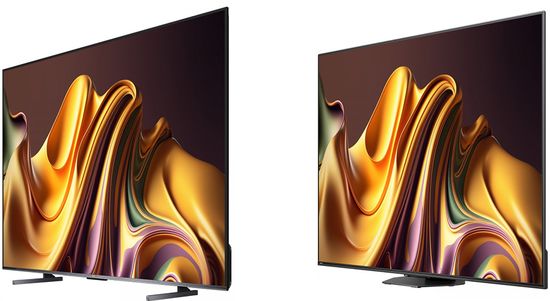
The series offers almost OLED contrast. As known, this technology works without backlight, providing ‘infinite’ contrast due to perfect black. The measured contrast of the new flagship reaches an unprecedented 280,000: 1 with local dimming (native 9,450: 1).
With the exception of the 75″ model with ADS Pro panel (2,000 local dimming zones), all TVs use a bright VA panel with 672 / 1,600 / 1,296 / 1,620 local dimming zones for 55″ / 65″ / 85″ / 100″ panels, respectively.
Unfortunately, using local dimming comes with a dimmer playback of the leading edge of quick-moving objects.
Blooming is slightly visualized around bright objects and subtitles when displayed against a black background.
Peak HDR Brightness / game mode:
– 900 nits (or cd/m²) in 2% Window – 2,600 nits (100% Window) / 840 nits – 2,050 nits;
Peak SDR Brightness:
– 870 nits (2% Window) – 2,150 nits (100% Window).
Color Gamut – 97% in DCI P3 and 80% for Rec 2020;
Pre / post calibration:
– White Balance dE – 3.54 / 0.26 (Good value < 3);
– Color dE – 2.01 / 0.92 (Good value < 3);
– Gamma – 2.12 / 2.19 (2.1 – 2.3);
– Color Temperature – 6,535K / 6,530K (6,500K ideal).
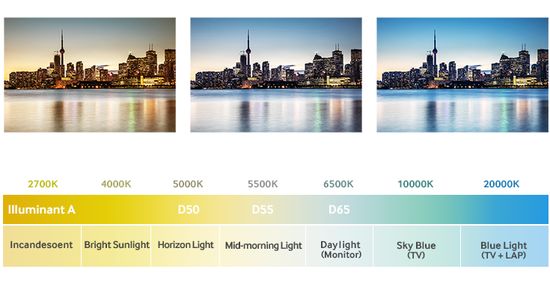
TCL QM851G (2024) vs Hisense U8N
TCL QM851G (2024) retain many of the huge 115″ QM89’s specs, including a claimed 5,000 nits of brightness.
In fact, ‘only’ 5,000 local dimming zones is its main differentiator. However, their optimal number directly depends on the screen size. Therefore, 20,000 local dimming zones in 115-inches QM89 is not a whim, but a price to pay for its enormous size.
New QM8 has a built-in 2.1.2ch Atmos speakers and cover up to 97% of the DCI-P3 color standard.
Upgrades vs QM8 (2023):
– $ 1,400 vs $ 1,000;
– increased brightness;
– new AIPQ Pro processor;
– doubled amount of local dimming zones;
– ATSC 3.0 tuner or next gen TV tuner (improved ATSC 3.0 broadcast standard);
– new anti-glare coating (to be fair, the ambient light sometimes causes glare);
– 2.1.2ch speaker system (two up-firing speakers and a built-in sub-woofer).
TCL QM8 (2024) vs Hisense U8N:
– $ 1,400 vs $ 1,000;
– 5,000 vs up to 2,000 local dimming zones;
– 5,500: 1 vs 9,450: 1 (native contrast) and n/a vs 280,000: 1 (with local dimming);
– peak brightness – 5,000 vs 3,000 nits.
Unlike South Korean competitors, which use Samsung’s Tizen and LG’s Webos, Chinese companies use Roku, Android or Google TV. Both new models offer Google Smart TV.
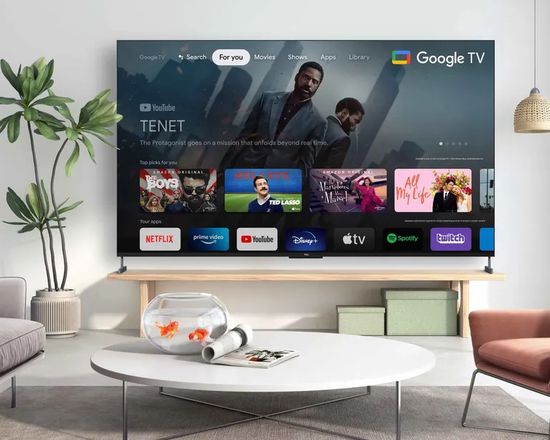
Of course, the assessment of a smart TV platform depends significantly on personal preferences. But in general, Android is more common in Hisense TVs, TCL gives preference to Roku or Google TV. In addition, both brands support compatibility for the smart assistant, however, and for Apple’s Siri.
Conclusion
As when comparing last year’s Hisense U8K vs TCL QM8, new Hisense U8N and TCL QM851G (2024 ) models offer almost identical image quality. However, this is due to quite logical factors.
Indeed, both flagships support almost all industrial innovations. For example, Hisense U8N uses QLED Quantum Dot, miniLED Pro, 144HZ Game Mode Pro (AMD FreeSync Premium Pro, Auto Low Latency Mode and Low Latency MEMC), HI-View Engine Pro (Dynamic Tone Mapping Pro, Face Detection, AI HDR Enhancement and AI Detail Enhancement), etc.
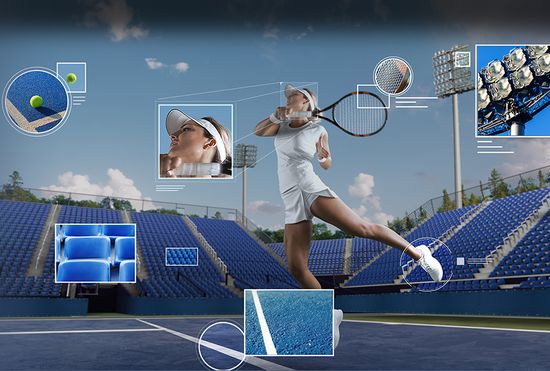
The innovative level of TCL QM851G (2024) is no lower. The model uses miniLED Ultra backlight (more than 5000 local dimming zones), High Brightness Ultimate (peak brightness up to 5,000 nit), QD Color Ultra, TCL AIPQ Pro processor, anti glare screen, etc.
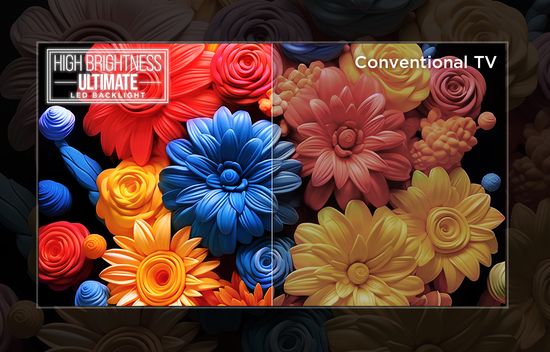
Of course, their specs are significantly different. In particular, TCL is traditionally brighter (5,000 vs 3,000 nits), Hisense is more contrasty (9,450: 1 vs 5,500: 1 native contrast and 280,000: 1 contrast with miniLED Pro-based local dimming). But the brightness and contrast of most modern flagships has long been excessive. For example, SDR content plays back in high quality even at 400 nits, HDR mode also requires only up to 1,000 nits. Therefore, the ongoing trend towards increasing these characteristics is largely due to marketing considerations.
In fact, only the price ($ 1,400 / TCL vs $ 1,000 / Hisense for 65″) today is their significant difference. But this aspect can change due to discounts. Otherwise, the choice depends on secondary factors, including individual attitude towards brands, access to service, etc.
This video introduces the new Hisense U8N.
